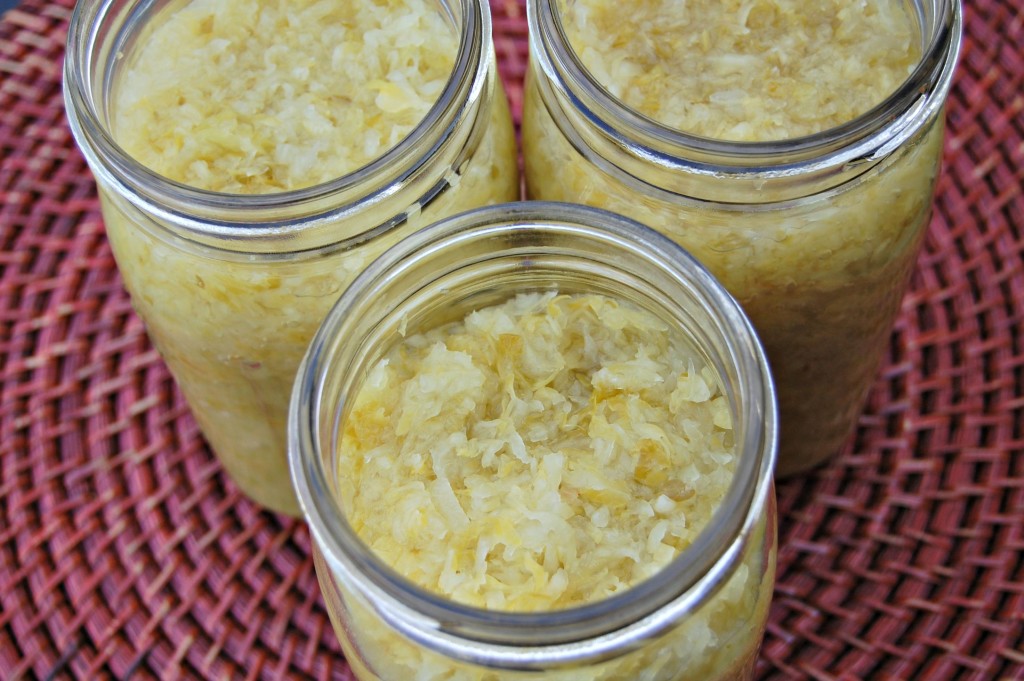
Another culinary skill under my belt.
Ok, if something only takes slicing, squishing and waiting…..is it really a skill? Hey, I’ll take whatever culinary credit I can get. It’s a skill.
I began my adventure in sauerkraut making on August 23. I had grown my own cabbage this year and it was very much ready to be picked.
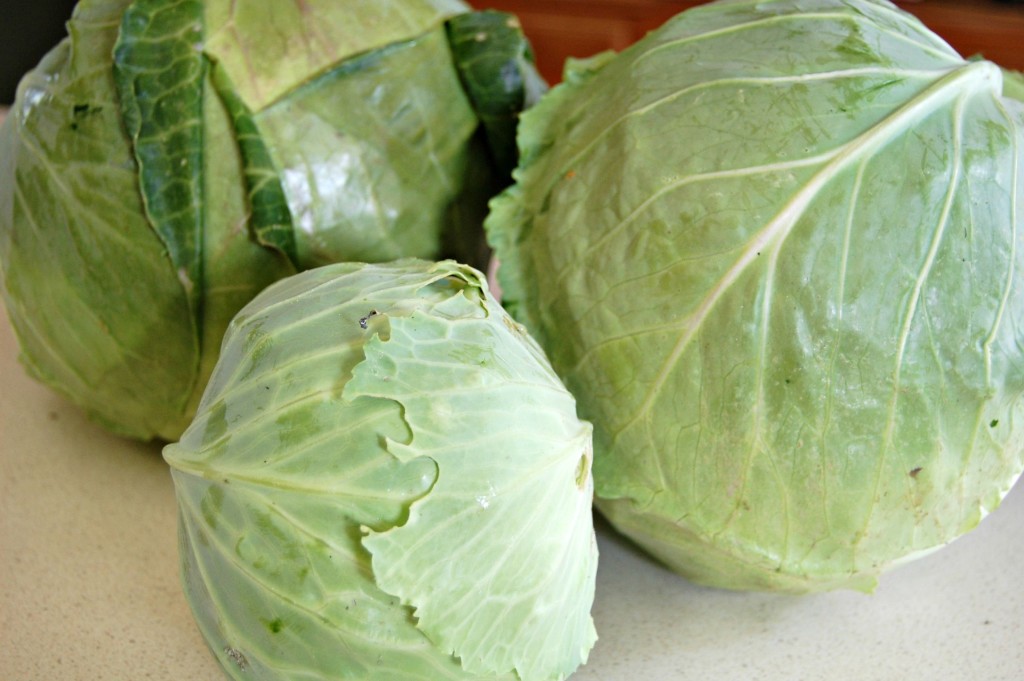
I actually had four heads but the birds had many meals on one of them so I donated it to the chickens. Actually, on the way to the chickens the goats got to me and began to devour the cabbage. Who knew goats loved cabbage? Now we all do! Yes, they jumped up on me and nearly knocked me over again.
Michael told me he prefers his sauerkraut finely shredded (stays on a sausage dog better) so I used my food processor with the shredding blade. I had about 12 pounds of cabbage total.
I have these great Tillamook Ice Cream buckets that are BPA free that worked nicely. The massaging, beating, squishing, pummeling is quite therapeutic for a high stress level.
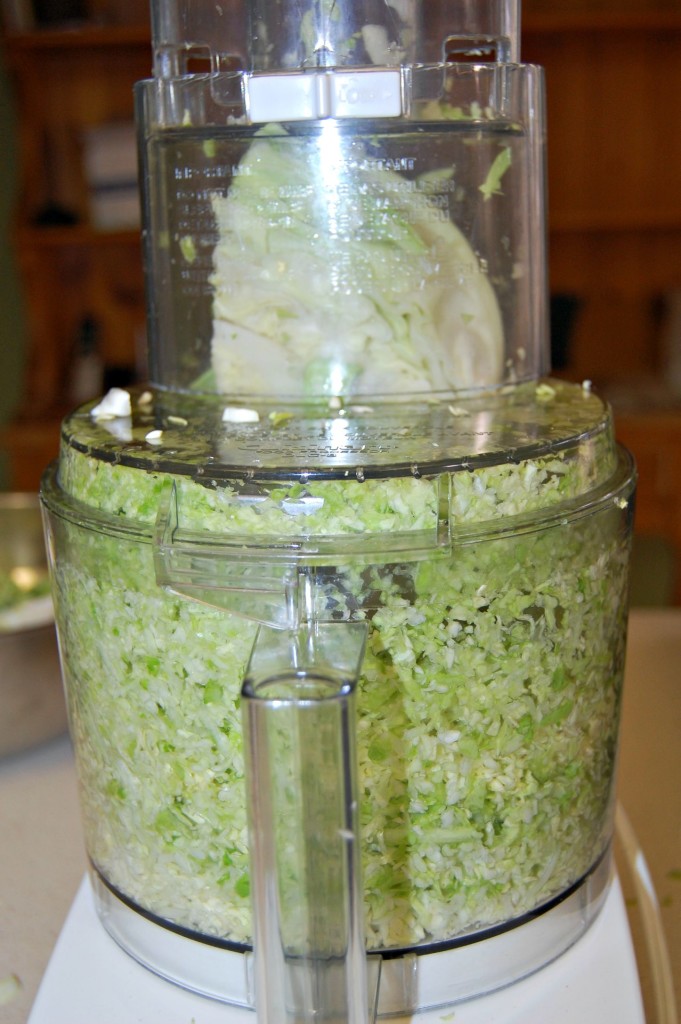
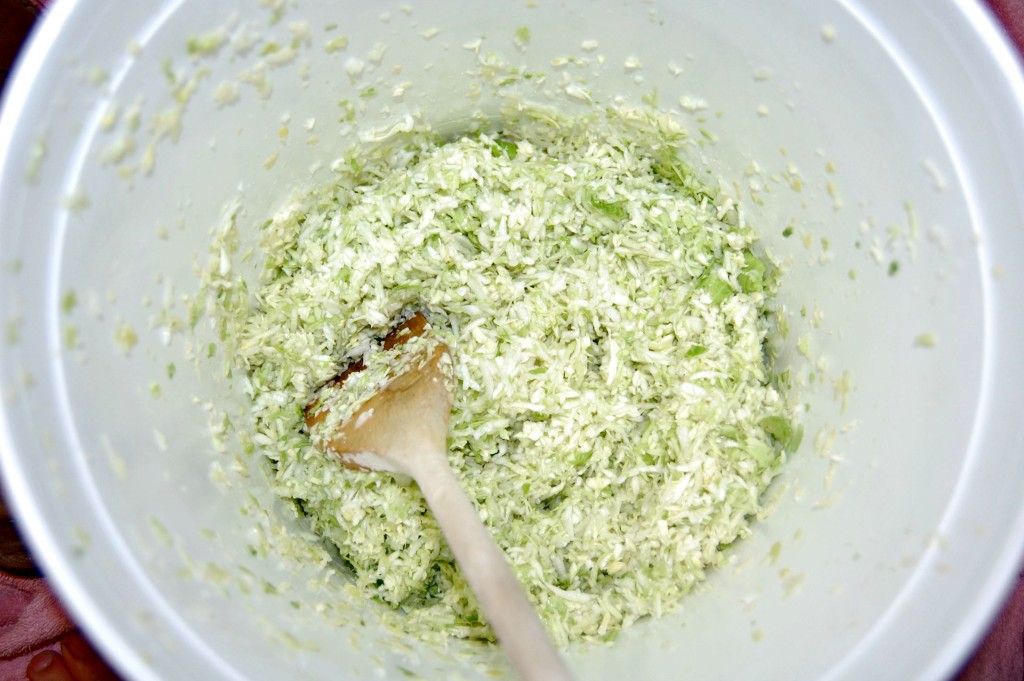
Once enough liquid was released I wiped down the sides of the bucket, found a plate to fit on top of the cabbage, grabbed a large rock from outside (placed inside two plastic bags) for on top of the plate, put a lid on it and put it in a cool spot in the house
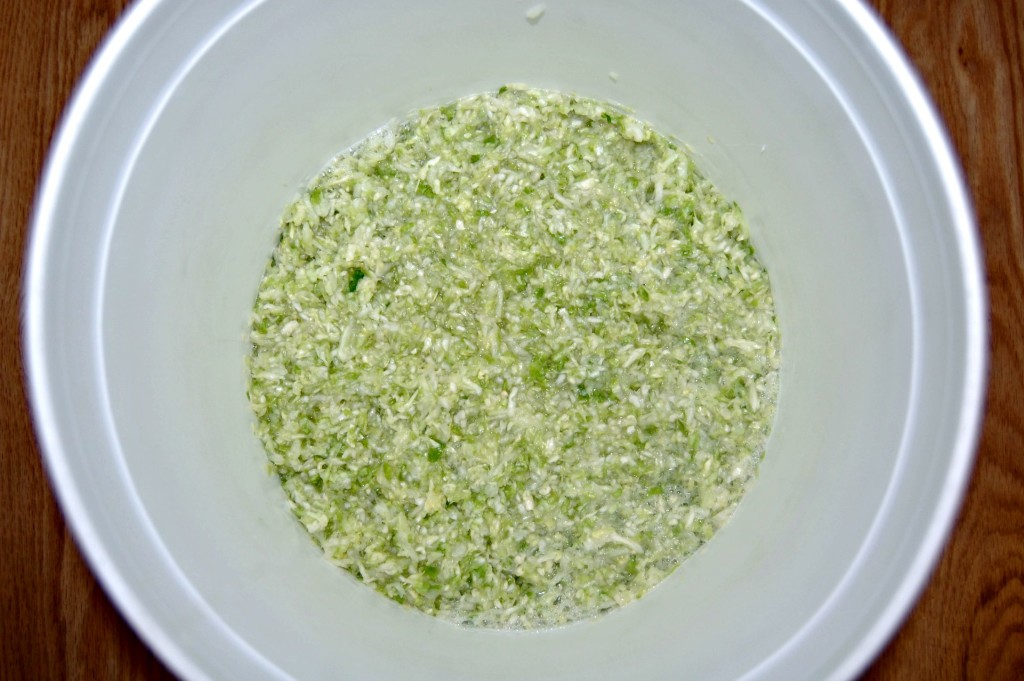
Fast forward to September 11 and we have sauerkraut! Boy does it taste good. I packed it into mason jars (five jars total) and put it in the refrigerator.
I’ve written up a recipe for the process. Mostly I just did what my friend told me to do. You can find many different sources on the internet that will explain how to make sauerkraut.
I hope you give it a try. It is SUPER EASY and really HEALTHY!

Homemade Sauerkraut is so Easy.
Ingredients
Kraut
- 5 lbs cabbage
- 3 Tablespoons salt
Brine
- 4 cups distilled water
- 1.5 Tabelspoons salt
Instructions
- Pick off any damaged/dirty outer leaves from the cabbage.
- Slice whole cabbage in half. Cut out cabbage core.
- Slice cabbage by hand or with a food processor.
- Dump cabbage into a container large enough to hold all of it with room to spare.
- Sprinkle salt over the cut cabbage.
- Massage the cut cabbage. Your best tools for this job are clean hands. You can also use a potato masher, a spoon , or as I did a wooden spatula.
- Your goal is to force the cabbage to release as much moisture as it can. This liquid plus the salt becomes your brine. This process can take 30 minutes or more depending on the cabbage.
- Once the cabbage has released a lot of liquid, pack it into a container. I used a BPA free plastic bucket. You can use a ceramic crock or mason jars. Pack it so that the liquid covers the cabbage. If you need more liquid go ahead and make a brine. Pour enough to cover the kraut.
- An alternate method is to put a weight on top of your cabbage. I used a round plate with a rock (inside two seal-able plastic bags) on top to hold the cabbage under the brine. I put a plastic lid on my bucket half full of cabbage. Some people say it should breath so they cover it with a thin towel or cheesecloth. I didn't have any problems.
- Put the container of cabbage in a cool spot (70°-75°) Look at your cabbage every few days. If any scum begins to form (usually on stuff above the brine) scrape it off. Taste it until it is to your liking. Can take from 3-4 weeks. (If temperatures are 60°- 65° it can take a couple more weeks to ferment. It is not advisable to ferment it in temperatures under 60°.)
- Once the taste has reached your liking put it into clean mason jars (again make sure the liquid covers the sauerkraut, make more brine if necessary) and store in the refrigerator for months. You can also can the sauerkraut for longer shelf life. If using the hot pack method bring cabbage/brine mixture to a boil stirring frequently. Pack kraut and juice into jars leaving 1/2 - inch headspace. Process in a boiling water bath for 10 minutes for pints and 15 minutes for quarts.
- For cold pack fill your jars with kraut and juice leaving 1/2- inch headspace. Process in a boiling water bath for 20 minutes for pints and 25 minutes for quarts.
Notes
Here’s to good gut bacteria.
Karen
PS: since things are starting to wind down (from light speed to the speed of sound) I thought I would post some preserving recipes from this summer that we really enjoy. More to come.
WOW!!! Delicious recipe. I’ve never made this and I had no idea how easy it is. Looks perfect. Twelve pounds is a ton. Well not quite. (About 1888 pounds short of that.) But it’s still a lot!
At that point in the garden, shredding all the cabbage and making it into sauerkraut was just the easiest thing to do.
It tastes really good and I’ve already given some to my mom.
Take care,
Karen
I am motivated to make a small batch!! Happy gut..fight some cancer plus we love cabbage. Thanks for the tips.
I was watching something yesterday and they said if you eat four servings of “fermented” stuff (which sauerkraut is) each day it will help restore the proper balance of good vs. bad bacteria in you gut.
Let me know what you think if you do try it.
hugs,
Karen
WOW! Not only are you making your family more healthy, but many others. Keep up the good(and hard) work.
on another note, I could not get the salsa recipe???
Pinky
Thank you!
I accidentally hit “publish” on the salsa blog when it wasn’t ready so I had to cancel it.
I have it scheduled for Friday.
Lovely and healthy recipe.. I could never have imagined that the homemade Sauerkraut is so easy to make.. Thanks for sharing this lovely recipe
You’re welcome. It will be something I make every year now.
I hope you give it a try.
Have a great day,
Karen